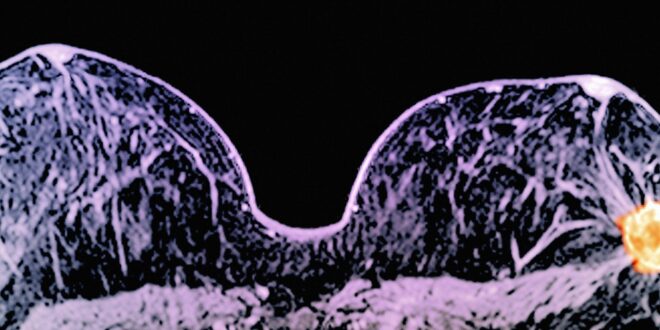Breast health is a critical concern for women worldwide, and changes in the size, shape, or texture of breast tissue often raise important medical questions. One condition that can cause confusion and fear is breast shrinking cancer, a term used to describe cases where breast cancer leads to a noticeable reduction in breast volume. This phenomenon may occur due to tissue scarring, treatment side effects, or the cancer itself.
Understanding breast shrinking cancer is essential because it may be overlooked or mistaken for other conditions. Early detection and accurate diagnosis are vital for improving treatment outcomes. By learning the causes, warning signs, and treatment strategies, individuals can take proactive steps to protect their health and seek medical attention when needed.
Definition and Overview
Breast shrinking cancer refers to breast cancer cases where noticeable breast shrinkage occurs, often due to tissue changes caused by cancer growth, surgical procedures, radiation, or fibrosis. Unlike swelling or lumps, shrinkage is less commonly discussed but can be a significant clinical sign. It may be associated with advanced cancer stages, inflammatory breast cancer, or treatment-related side effects.
This condition not only impacts physical appearance but also affects emotional well-being and body image. Recognizing breast shrinking cancer as a potential symptom of malignancy helps clinicians guide patients toward proper evaluation and timely management.
Types
Breast shrinking cancer can be linked to several breast cancer types, including:
- Inflammatory Breast Cancer (IBC): May cause skin tightening and breast shrinkage.
- Lobular Carcinoma: Can alter breast structure, leading to asymmetry or shrinkage.
- Post-Surgical Changes: After lumpectomy or mastectomy, breast volume may reduce due to tissue removal.
- Radiation-Induced Fibrosis: Causes scarring and contraction of breast tissue.
Each type affects breast appearance differently, but all require medical evaluation to distinguish cancer-related shrinkage from other benign conditions.
Causes and Risk Factors
Breast shrinking cancer can result from multiple underlying causes:
- Cancer Growth: Tumor infiltration may destroy healthy tissue, reducing breast size.
- Treatment Side Effects: Radiation and chemotherapy can lead to scarring or tissue loss.
- Hormonal Changes: Estrogen reduction may contribute to volume loss in certain cases.
- Surgical Interventions: Removal of tumors or lymph nodes may result in breast asymmetry.
Risk factors include family history of breast cancer, genetic mutations (BRCA1/BRCA2), age, obesity, hormonal imbalance, and previous chest radiation.
Symptoms and Early Warning Signs
Breast shrinking cancer may present with distinct symptoms, including:
- Noticeable reduction in one breast’s size compared to the other
- Tightening or hardening of breast skin
- Retraction of the nipple or skin dimpling
- Redness, swelling, or thickened skin texture
- Persistent pain or discomfort
Early detection requires being attentive to subtle breast changes, not only lumps or swelling. Women should regularly perform self-examinations and consult healthcare providers for evaluation.
Diagnosis
Diagnosing breast shrinking cancer involves multiple steps:
- Physical Examination: Doctors assess asymmetry, skin texture, and nipple changes.
- Imaging Tests: Mammography, ultrasound, and MRI reveal tissue alterations.
- Biopsy: Confirms whether shrinkage is cancer-related.
- Histopathology: Determines cancer type and stage.
Accurate diagnosis ensures the right treatment plan and helps differentiate cancer from benign conditions such as fat necrosis or scar tissue.
Treatment Options
Treatment for breast shrinking cancer depends on stage, type, and patient health:
- Surgery: Lumpectomy or mastectomy to remove cancerous tissue.
- Radiation Therapy: Targets cancer cells but may also cause tissue shrinkage.
- Chemotherapy: Systemic treatment to shrink or control tumor growth.
- Hormone Therapy: Used for hormone receptor-positive cancers.
- Reconstructive Surgery: Helps restore breast volume and appearance.
Multidisciplinary approaches often provide the best outcomes, combining medical, surgical, and cosmetic treatments.
Prevention and Lifestyle Recommendations
While breast shrinking cancer cannot always be prevented, lifestyle changes can lower risk:
- Maintain a healthy weight through diet and exercise
- Limit alcohol and avoid smoking
- Perform monthly self-breast exams and schedule routine screenings
- Manage hormone therapy carefully under medical supervision
- Adopt a balanced diet rich in antioxidants and whole foods
Preventive strategies focus on reducing modifiable risks and encouraging regular medical checkups.
Prognosis and Survival Rates
Prognosis for breast shrinking cancer varies depending on stage and type. Early detection generally leads to higher survival rates, while advanced cases pose more challenges. The five-year survival rate for localized breast cancer exceeds 90%, but outcomes drop significantly if cancer has spread.
Breast shrinkage itself does not determine prognosis but may indicate more aggressive or advanced disease. Treatment response, patient health, and medical advancements play key roles in long-term survival.
Latest Research and Innovations
Research into breast shrinking cancer continues to evolve:
- Targeted Therapy: Drugs that attack specific cancer cell markers.
- Immunotherapy: Boosts the body’s immune system to fight cancer.
- Advanced Imaging: Improves early detection of tissue changes.
- Reconstructive Techniques: New surgical methods to restore natural breast shape.
Clinical trials explore innovative treatments, offering hope for improved outcomes and better quality of life.
Coping and Support for Patients
Breast shrinking cancer affects not only physical health but also emotional well-being. Patients may experience body image concerns, anxiety, or depression. Support strategies include:
- Joining breast cancer support groups
- Seeking counseling or therapy for emotional challenges
- Exploring reconstructive surgery options for body confidence
- Engaging in mindfulness, yoga, or meditation for stress relief
- Leaning on family and community for emotional support
Coping with breast shrinking cancer requires holistic care addressing both medical and psychological needs.
Conclusion
Breast shrinking cancer is a lesser-known but important sign of breast cancer that deserves awareness and understanding. Recognizing the symptoms, seeking timely diagnosis, and exploring effective treatment options can make a critical difference in patient outcomes.
By staying informed, practicing prevention, and accessing both medical and emotional support, individuals can face breast shrinking cancer with greater confidence. Continued research and innovation provide hope for improved survival rates and better quality of life for those affected.
